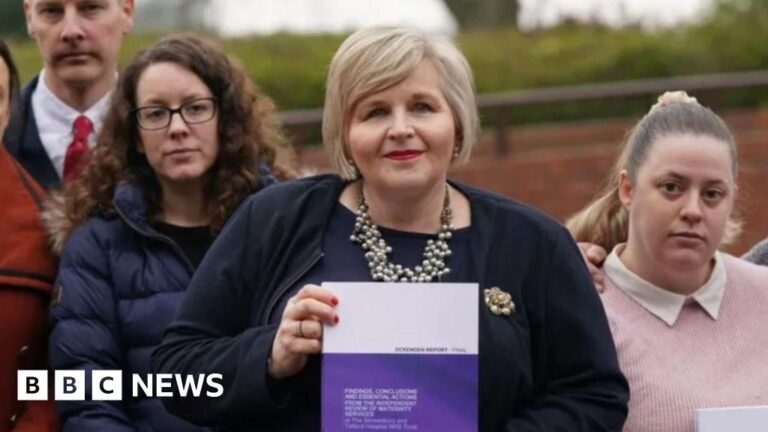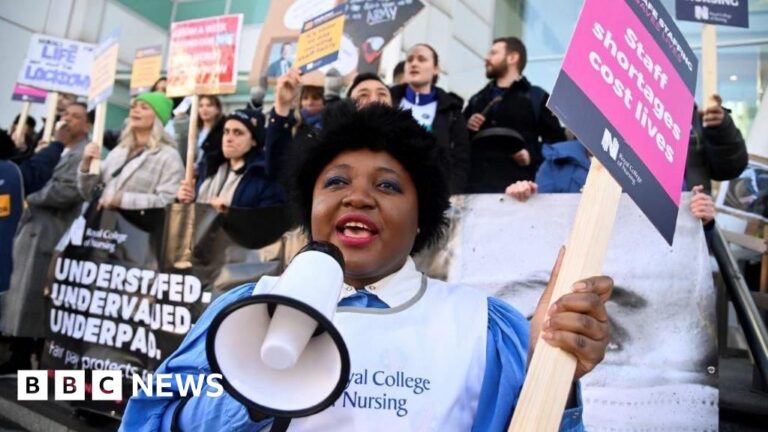The sun was bursting through the sandstone arch of Window Rock in northeastern Arizona, and Health Secretary Robert F. Kennedy Jr. was finally in his element: on a hike. He was on the last day of his multistate Make American Healthy Again tour, designed to highlight his plan to fight chronic disease, including healthy school lunches and medical clinics that take a holistic approach to patient care. He was strolling with the president of Navajo Nation, delegates of the nation’s council, and the acting director of the Indian Health Service, discussing the challenges of providing high-quality health care to tribal groups.
He had left Washington with questions growing about his handling of a measles outbreak in West Texas and the firing of thousands of Department of Health and Human Services employees. He made a stop in Texas to attend the funeral of an unvaccinated 8-year-old girl, the second child to die of measles in this outbreak.
On the start of the tour, Kennedy had seemed stoic and nervous as he was led through a Salt Lake City health center focused on nutritious diets. He declined a bag of fresh groceries, citing his upcoming flight, and stood expressionless as a medical student reached to activate the secretary’s food processor without putting the lid on.
By Tuesday, Kennedy had loosened up, wearing a stegosaurus tie and shaking hands with a Navajo toddler at a health center near Phoenix, as the boy learned to cook blue corn crepes. The health secretary poked his head into the refrigerators of a food distribution center, examining food labels and nodding as he said, “Very impressive.”
He met with school children, including dozens of school children who waved posters with slogans like “Cut the Chemicals” and “Ditch the Dyes.” There was a “Go Bobby!” chant from the back. By then, he was beaming.
On the hiking trail, Kennedy offered a glimpse of the persona he had once displayed on the presidential campaign trail: an adventurous and spiritual man, ardent in his convictions, who had clawed his way out of a heroin addiction by throwing himself into new extremes.
He was the first to scramble to the pinnacle of the Window Rock formation, a silhouette balancing 1,000 feet above the valley floor.
Kennedy relies on a natural diet and intermittent fasting as part of his own approach to fighting chronic disease. He also attends a 12-step meeting, goes to the gym, and practices meditation. However, since arriving in Washington, he had to give up a favorite daily ritual: a three-mile hike with his dogs.
On this trek, officials discussed initiatives like the Navajo Nation’s longstanding 2% tax on junk food, adopted as part of legislation passed in 2014 that also removed a higher tax on fruits and vegetables and inspired similar policies in neighboring towns. They also talked about the Navajo Agricultural Products Industry, a tribal program that sells corn, beans, and other products under the “Navajo Pride” brand to support the community.
To close his tour, Kennedy visited Hózhó Academy in Gallup, N.M., a K-12 school that hosts gardening and cooking events for families and uses a curriculum to help students plan their own health goals.
Epidemiologists say there are many factors driving rates of chronic disease, including genetics, changes in the intestinal tract’s microbiome, and the fact that Americans are living longer and therefore facing new conditions that come with age.
Kennedy has tended to de-emphasize these factors, focusing on childhood vaccine schedules, psychiatric medications, and other variables instead. However, on this tour, he kept most of the attention on personal wellness as a key method for addressing the crisis.
Source link




